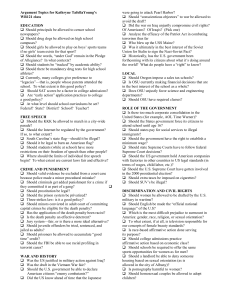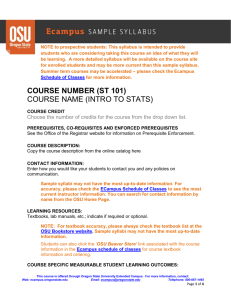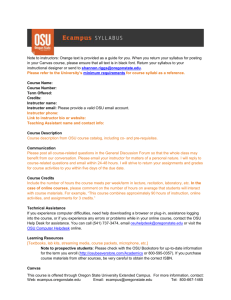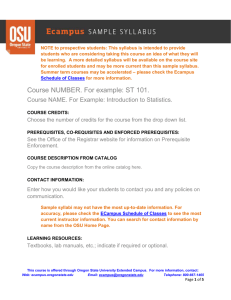Budget Preparation Instructions
advertisement
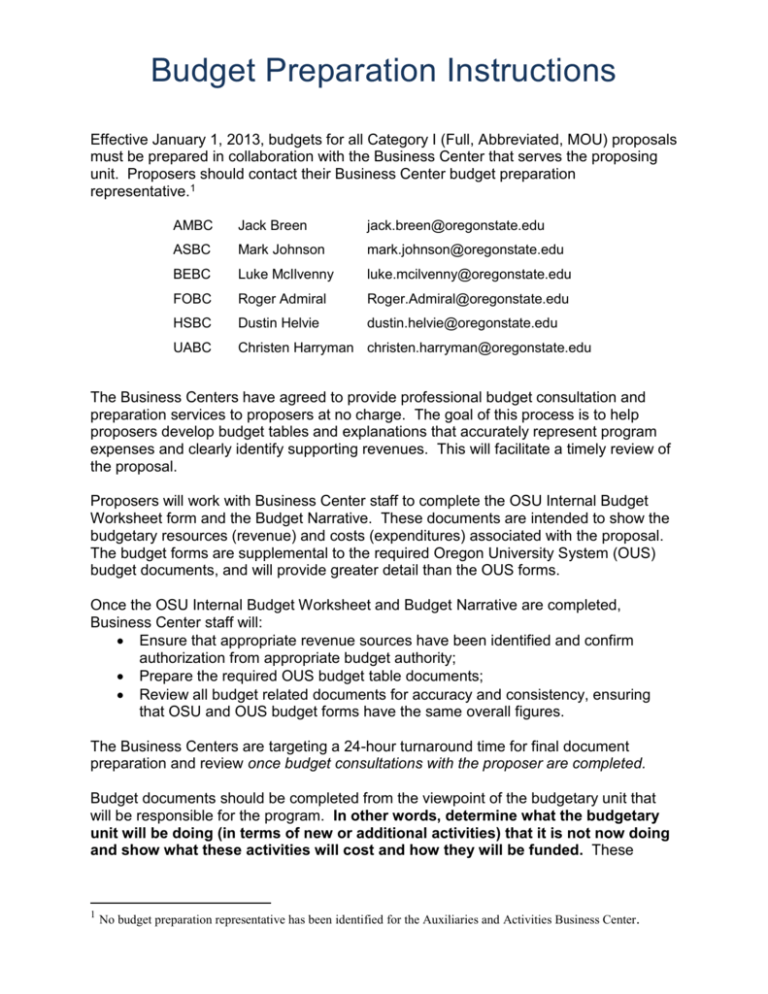
Budget Preparation Instructions Effective January 1, 2013, budgets for all Category I (Full, Abbreviated, MOU) proposals must be prepared in collaboration with the Business Center that serves the proposing unit. Proposers should contact their Business Center budget preparation representative.1 AMBC Jack Breen jack.breen@oregonstate.edu ASBC Mark Johnson mark.johnson@oregonstate.edu BEBC Luke McIlvenny luke.mcilvenny@oregonstate.edu FOBC Roger Admiral Roger.Admiral@oregonstate.edu HSBC Dustin Helvie dustin.helvie@oregonstate.edu UABC Christen Harryman christen.harryman@oregonstate.edu The Business Centers have agreed to provide professional budget consultation and preparation services to proposers at no charge. The goal of this process is to help proposers develop budget tables and explanations that accurately represent program expenses and clearly identify supporting revenues. This will facilitate a timely review of the proposal. Proposers will work with Business Center staff to complete the OSU Internal Budget Worksheet form and the Budget Narrative. These documents are intended to show the budgetary resources (revenue) and costs (expenditures) associated with the proposal. The budget forms are supplemental to the required Oregon University System (OUS) budget documents, and will provide greater detail than the OUS forms. Once the OSU Internal Budget Worksheet and Budget Narrative are completed, Business Center staff will: Ensure that appropriate revenue sources have been identified and confirm authorization from appropriate budget authority; Prepare the required OUS budget table documents; Review all budget related documents for accuracy and consistency, ensuring that OSU and OUS budget forms have the same overall figures. The Business Centers are targeting a 24-hour turnaround time for final document preparation and review once budget consultations with the proposer are completed. Budget documents should be completed from the viewpoint of the budgetary unit that will be responsible for the program. In other words, determine what the budgetary unit will be doing (in terms of new or additional activities) that it is not now doing and show what these activities will cost and how they will be funded. These 1 No budget preparation representative has been identified for the Auxiliaries and Activities Business Center. documents will be used to define the allocation of resources for the program as well as an estimate of the costs required to implement and sustain the program. The OSU Internal Budget Worksheets and Budget Narrative consists of four pages; one accounting for one-time expenses and resources (non-recurring), one accounting for recurring costs and resources, one that will summarize all expenses and resources, and a fourth that will be a narrative for the budget figures. The OSU budget worksheets and budget narrative should describe the types of costs the program will generate, along with sources of revenue that the program will be provided or will generate. If there are no new or additional activities, the OSU Budget worksheet will not be required. However, the budget narrative should still be submitted stating “NO BUDGETARY IMPACT”. The OSU Budget Worksheet and Budget Narrative consists of three categories: Personnel; Other Expenses, and Resources. Personnel: Describe the personnel associated with the program. For Faculty and Support Staff detail the rank and number of full-time, part-time greater than or equal to 0.50 FTE, and part-time less than 0.50 FTE. (See the OSU Budget Narrative Example). Other Expenses: Describe the costs associated with the Library (based on a Library Evaluation, if applicable), along with the anticipated Services and Supplies needs; Capital Equipment needs; and Facility Renovation needs. Resources: Describe the source of revenue required to support the proposed change or new program; e.g., from internal reallocations of existing revenue, from tuition revenue, from returned overhead, or from some other revenue source. All sources and levels of revenue associated with the proposal must be agreed to and documented by those who are providing the funds. Documentation can be by signing the required transmittal sheet form, or by either a letter of support or an email message posted to the proposal that confirms their level of support. Trial Period: Involvement of the Business Centers in the preparation of curricular proposals is new. The Office of Academic Programs, Assessment, and Accreditation will review the impacts of this involvement in July, 2013. Input will be sought from proposers, from the Executive Committee and the Budgets and Fiscal Planning Committee of the Faculty Senate, as well as from Business Center staff and leadership. Findings and recommendations, including a recommendation of whether to continue or terminate these arrangements, will go out to stakeholders in August, 2013. OSU BUDGET NARRATIVE EXAMPLE Personnel: Faculty, Tenured/tenure-track: Professor: 3 @ 1.0 FTE, $300,000 Faculty, Fixed-term: Instructors: 2 @ 0.45 FTE, $40,000 Graduate Assistants: None Support Staff: Academic Advisor: 1 @ 1.0 FTE, $38,000 Office Specialist: 1 @ 1.0 FTE, $30,000 OPE: Tenured Faculty: average 37% Part-Time Faculty: average 25% Support Staff: average 55% Other Expenses: Library: Printed material: $595 Electronic material: $1,500 Services and Supplies: General Operating Costs: $80,000 Travel/Professional Development: $15,000 Furniture: $30,000, one-time Moving Costs: $8,000, one-time Capital Equipment: None Facilities Renovation: None Resources: Current Budget: The University’s Department of Budget will provide current budget support. Tuition: e-campus will provide the tuition revenue through new course offerings. Other: The Provost will provide for 2 faculty positions; an endowment is available to support this program, earning ~$22.5K annually and a current balance of ~$50K.



